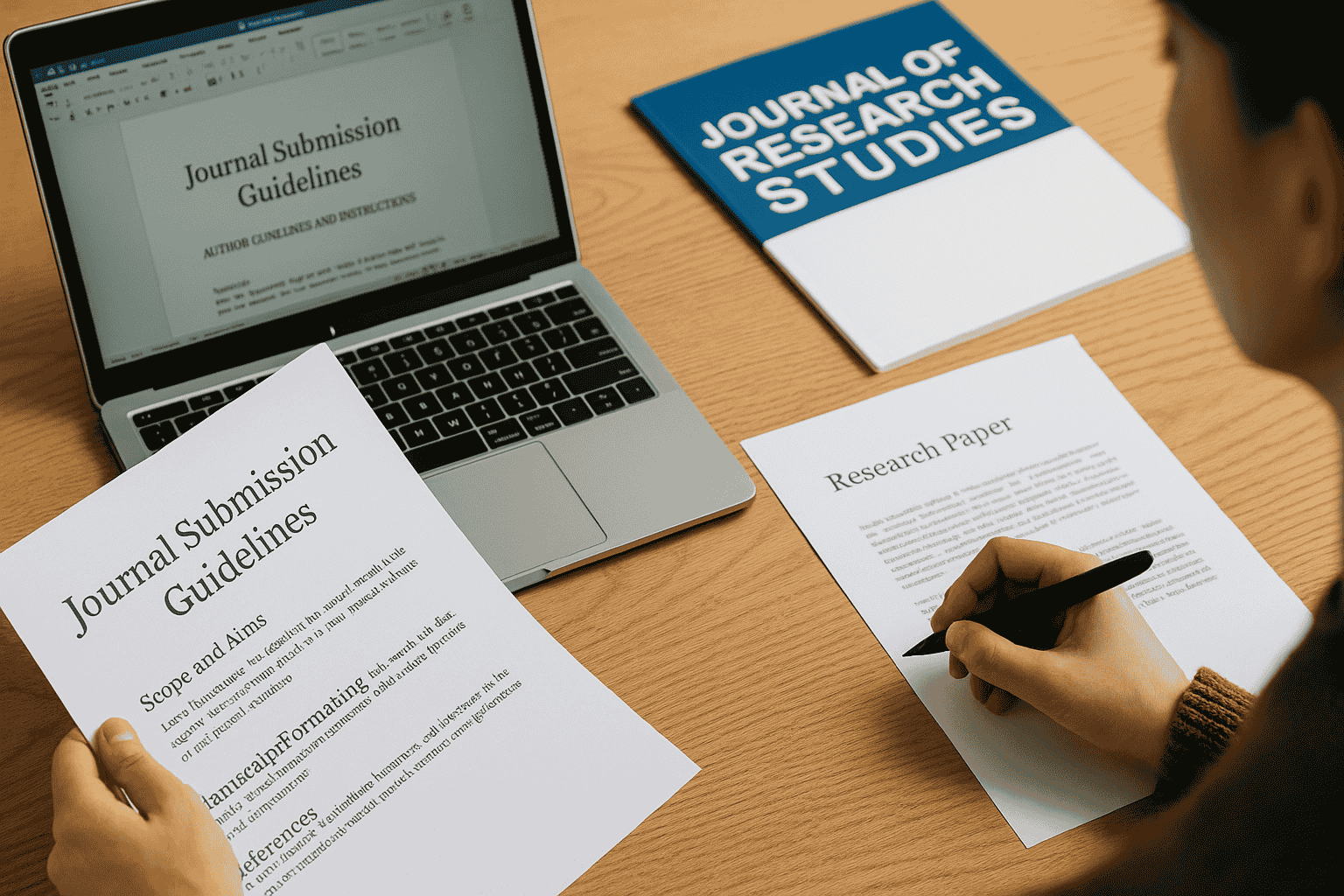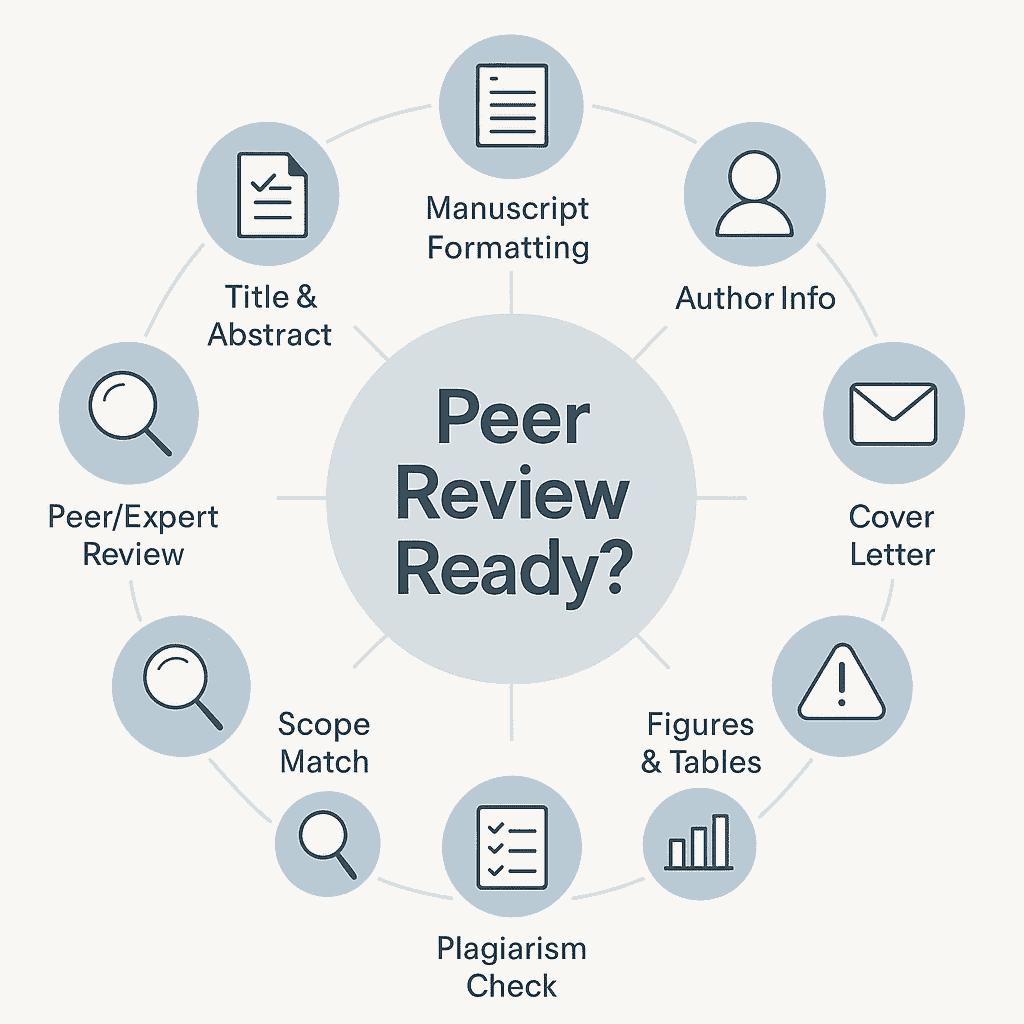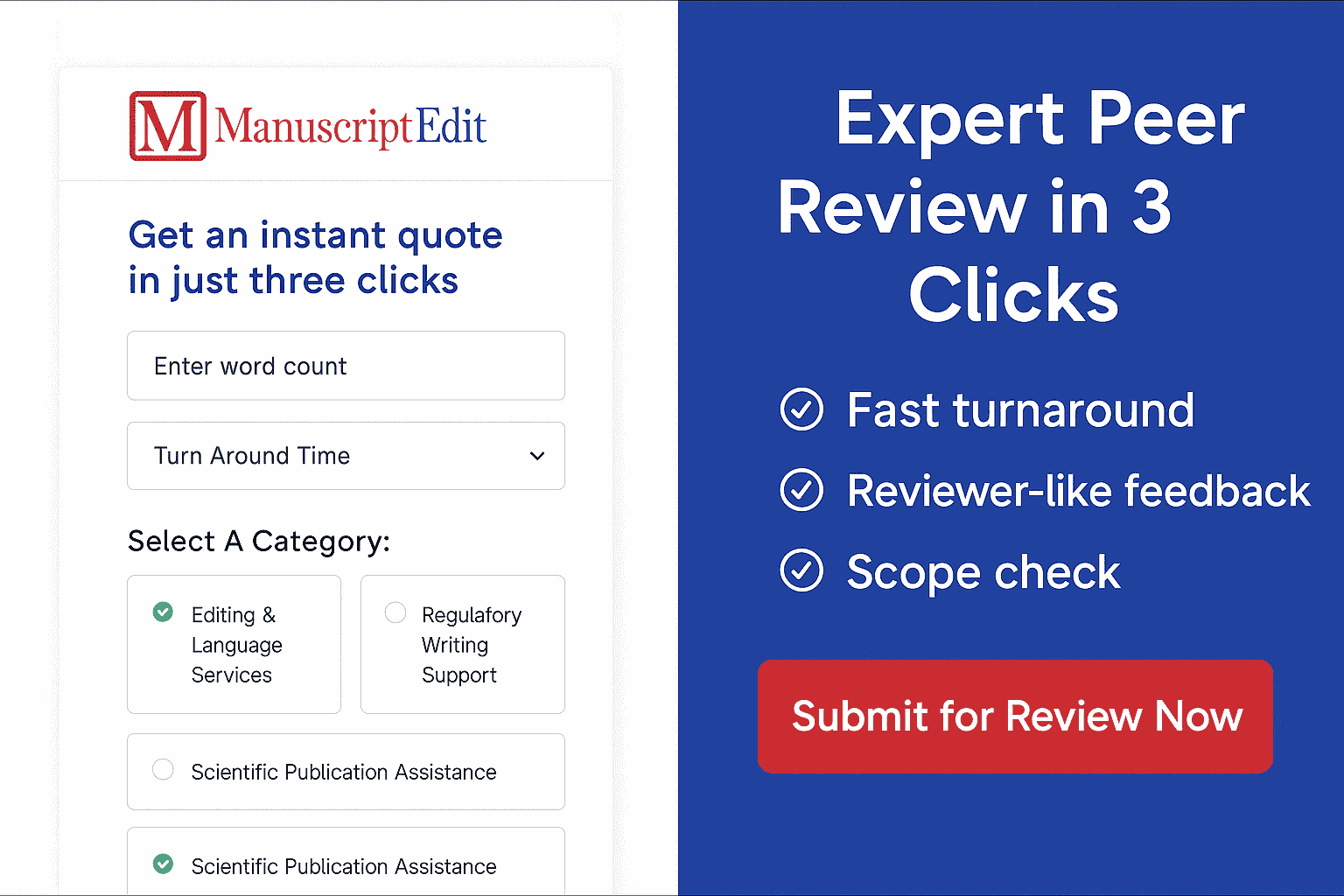
- Why Papers Get Desk-Rejected — And Why It Hurts
- Download Your Free Peer Review Submission Checklist [Template]
- The 10-Step Peer Review Readiness Guide
- How ManuscriptEdit Can Help You Pass Peer Review First-Time
- Post-Submission: What Happens Next in Peer Review?
- Mistakes That Can Still Get You Rejected
- Tools to Help You Submit Like a Pro
- Frequently Asked Questions
- Final Thought: Don’t Let Your Research Die at the Desk
- Want to Avoid Desk Rejection Today?
Why Papers Get Desk-Rejected — And Why It Hurts
Rita, a research scholar from India, had just completed her first research paper after six months of hard work—conducting surveys, gathering data, and analyzing results. Feeling proud, she submitted her paper to a well-known Scopus-indexed journal. But within just five days, her excitement turned into disappointment. She received a short email: “Your manuscript has been desk rejected.”
No detailed feedback. No suggestions. Just a simple rejection.
She was shocked. The topic of her research matched the journal’s focus, and she believed the content was strong. So why was it rejected without even going to peer review?
The truth is that many researchers, especially those new to academic publishing, often make small but critical mistakes while submitting. These mistakes are not about poor research but about missing important submission details.
In fact, more than 60% of submitted papers are rejected before they even reach the peer review stage. This early rejection is called desk rejection, and it usually happens because:
- The manuscript doesn’t match the journal’s scope
- It is not formatted correctly
- Important documents are missing
- Ethical statements are not included
The good news? You can easily avoid these problems. All you need is a clear and complete checklist to follow before you submit your research paper.

Download Your Free Peer Review Submission Checklist [Template]
Before moving forward, download your free editable checklist that will guide you through every critical step of your submission process.
Download: Peer Review Submission Checklist – Using the below link
https://tinyurl.com/peerreviewsubmissionchecklist
This checklist will help you:
- Make sure your paper meets the journal’s requirements
- Avoid missing essential documents like the cover letter, ethics statement, or author information
- Increase your chances of passing the first level of editorial screening in UGC-CARE, Scopus, or SCI journals
A well-prepared submission shows professionalism and care—qualities editors are always looking for.
The 10-Step Peer Review Readiness Guide
Keyword Focus: submission checklist, research paper formatting, author information Follow these 10 simple steps to make sure your paper is genuinely ready for submission:
Follow these 10 simple steps to make sure your paper is genuinely ready for submission:
| Step | What to Check | Why It Matters |
| 1 | Title and abstract are short, clear, and include good keywords | Editors use these to decide if your paper fits their journal |
| 2 | Paper follows journal formatting rules (APA, MLA, IEEE, etc.) | Journals quickly reject documents that don’t follow their style |
| 3 | Author details like name, designation, and institution are correct | This helps with proper indexing and communication |
| 4 | Ethics and conflict of interest statements are added | Required by UGC, COPE, and other guidelines |
| 5 | A cover letter is written to the correct editor and journal | Shows respect and effort |
| 6 | Tables and figures are clear, appropriately labeled, and high-quality | Helps readers and reviewers understand your data |
| 7 | References follow the correct style | The wrong format can cause immediate rejection |
| 8 | Plagiarism check done (less than 10% similarity) | Most journals check this before peer review |
| 9 | You have reviewed the journal’s aims and scope | Increases chances of acceptance |
| 10 | Your paper was reviewed by a mentor or expert | Improves quality before submission |
Even experienced researchers can forget one or two of these steps. But each one is important.

How ManuscriptEdit Can Help You Pass Peer Review First-Time
Sometimes, a professional review before submission makes all the difference. That’s why services like ManuscriptEdit are valuable.
[Explore ManuscriptEdit’s Peer Review Services]
Rita chose this service when she prepared her revised paper. Here’s what she got:
- Expert review by PhD holders
- Checks for formatting, journal scope, and structure
- Direct suggestions for improvement
- Ethical compliance review
- Fast turnaround to meet deadlines
Special Notes for Authors For Submitting Manuscript to Indexed Journal (Scopus)
If you’re submitting from India to Scopus-listed journals, keep these essential tips in mind:
- Your plagiarism report must show a similarity of less than 10%, using tools such as Turnitin or iThenticate.
- Include your ORCID ID—many journals now require this.
- Follow COPE, ICMJE, and AICTE ethics guidelines. If your study involves people or animals, you must mention ethics approval.
- Be sure to add statements about funding, conflicts of interest, and author contributions.
- Your institution should be UGC-recognized, or your paper could be rejected.
These small details can make a big difference.
Post-Submission: What Happens Next in Peer Review?
After you submit your paper, here’s what generally happens:
- Editorial Screening – The journal checks format, ethics, and scope.
- Editor Review – The editor checks for originality and relevance.
- Reviewer Assignment – Sent to subject experts for review.
- Review Time – Takes 3 to 12 weeks, depending on the journal.
- Decision – You may be accepted, asked to revise, or rejected.
Most journals don’t explain the reason for desk rejection. Therefore, preparing well in advance of submission is crucial to avoiding this stage altogether.

Mistakes That Can Still Get You Rejected
Be careful of these common errors:
- Writing the wrong journal name in your cover letter
- Forgetting to include an ethics statement if your study involves people
- Using incorrect reference style
- Sending off-topic papers to a journal with a different focus
- Adding low-quality images that are hard to read
- Submitting a paper with poor English or grammar
These issues can cause rejection—even if your research is promising.
Tools to Help You Submit Like a Pro
Use these tools to make your paper submission-ready:
| Tool | Purpose | Free/Paid |
| Turnitin / iThenticate | Check plagiarism | Paid |
| Elsevier Journal Finder | Check if your paper fits the journal | Free |
| Mendeley / Zotero | Manage references easily | Free |
| ORCID | Register your author ID | Free |
Using the right tools saves time and helps you avoid mistakes.
Frequently Asked Questions
What is desk rejection in research?
It means the journal editor rejects your paper before it goes for peer review.
How is my paper ready for peer review?
Use a checklist and get your paper reviewed by an expert.
What should I write in the cover letter for a journal?
Mention your paper title, a brief summary, what’s new in your work, and why the journal is a good fit.
How can I check a journal’s formatting guidelines?
Go to the journal website and read the “Instructions for Authors” section.
Can I submit it again after a desk rejection?
Yes, but make changes before resubmitting. Sometimes, it’s better to choose a different journal.
Final Thought: Don’t Let Your Research Die at the Desk
You worked hard to write your paper. Ensure that the effort receives the attention it deserves.
Before you click “Submit,” make sure to:
- Tick every box in the checklist
- Get your manuscript reviewed by a professional
- Match your paper with the journal’s focus and format
Want to Avoid Desk Rejection Today?
Start with confidence:
- Download your FREE Submission Checklist
- Use code CHECKLIST10 to get 10% off peer review services
- Submit your paper knowing it is ready for review
https://tinyurl.com/peerreviewsubmissionchecklist
Download the checklist + Get 10% Off Now
Your research deserves to be read—not rejected. Let it reach the global stage and make an impact.




